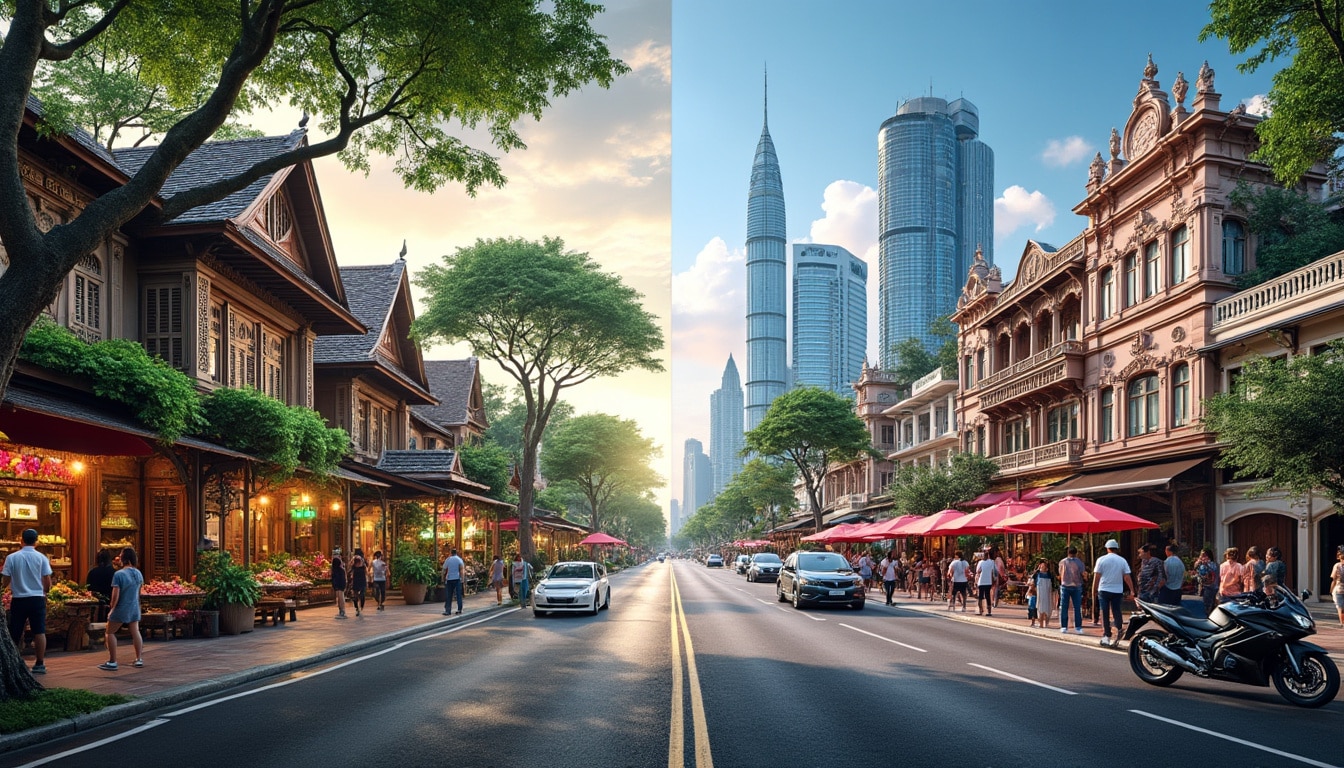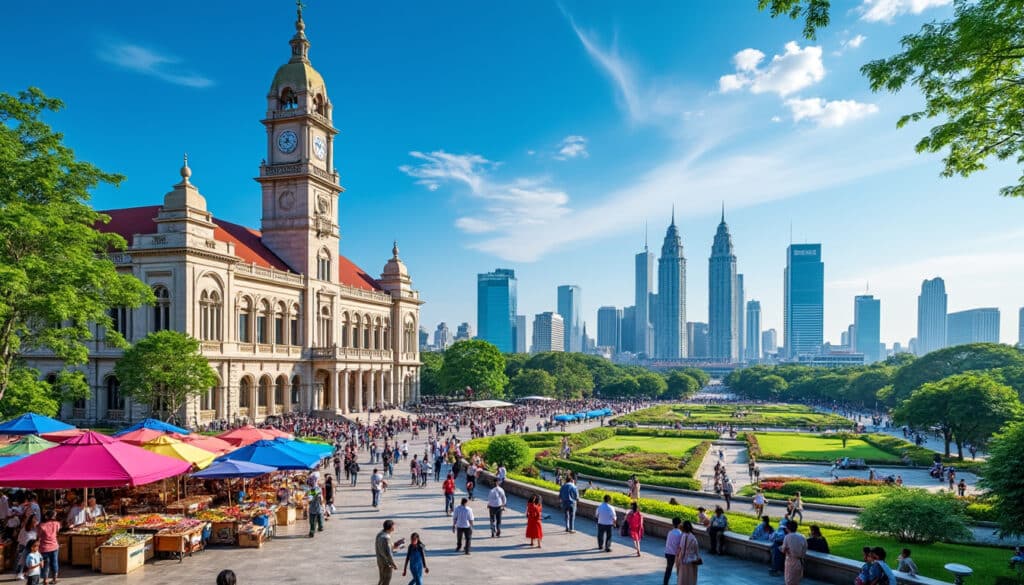Johor Bahru, often regarded as the gateway to Malaysia, has a captivating history that intertwines with the broader narrative of Southeast Asia’s colonial past and cultural convergence. This vibrant city has transformed dramatically over the past century, emerging from a humble fishing village into a bustling metropolis. Johor Bahru’s story is one of adaptation and growth, with its history reflected in its stunning colonial architecture, diverse cultural sites, and strategic economic developments. The legacy of early settlers, combined with colonial influences, has created a unique tapestry of cultural heritage that stands out in the present-day urban landscape.
The Foundation of Johor Bahru: A Historical Overview
The evolution of Johor Bahru, originally known as Tanjung Puteri, began in the mid-19th century. It was founded in 1855 by Temenggong Daeng Ibrahim, who established an administrative center for the Sultanate of Johor. The city was strategically located near Singapore, separated by the Johor Strait, making it a pivotal point for trade and governance during both the pre-colonial and colonial periods.
The etymology of “Johor” traces back to the Arabic word “jauhar,” which means precious stones—a nod to the region’s significance and prosperity. By 1866, under the reign of Sultan Abu Bakar, the city was officially renamed Johor Bahru. Sultan Abu Bakar, sometimes honored as the “Father of Modern Johor,” was instrumental in positioning the city as a modern administrative center by adopting Western-style governance and architecture. This transformation included the construction of the iconic Istana Besar, an elegant royal palace, which symbolizes the fusion of traditional Malay and European architectural styles.
- ✨ Founded in 1855 by Temenggong Daeng Ibrahim
- 🕌 Renamed Johor Bahru in 1866 during Sultan Abu Bakar’s reign
- 🏛️ Notable for Istana Besar, a blend of Malay and Victorian architecture
As Johor Bahru grew, it attracted settlers from diverse backgrounds, including Chinese, Indian, and Arab merchants, contributing to its multicultural identity. The city became a bustling hub for commodities like pepper and gambier, integral to the region’s economy during the 19th century. These developments laid the groundwork for Johor Bahru’s emergence as a critical player in Malaysia’s socio-economic landscape.
| Era | Key Developments | Significance |
|---|---|---|
| 1855-1866 | Foundation as Tanjung Puteri | Established as a trade and administrative hub |
| 1866 | Renamed Johor Bahru | Modernization under Sultan Abu Bakar |
| 19th Century | Arrival of diverse communities | Formation of a multicultural society |
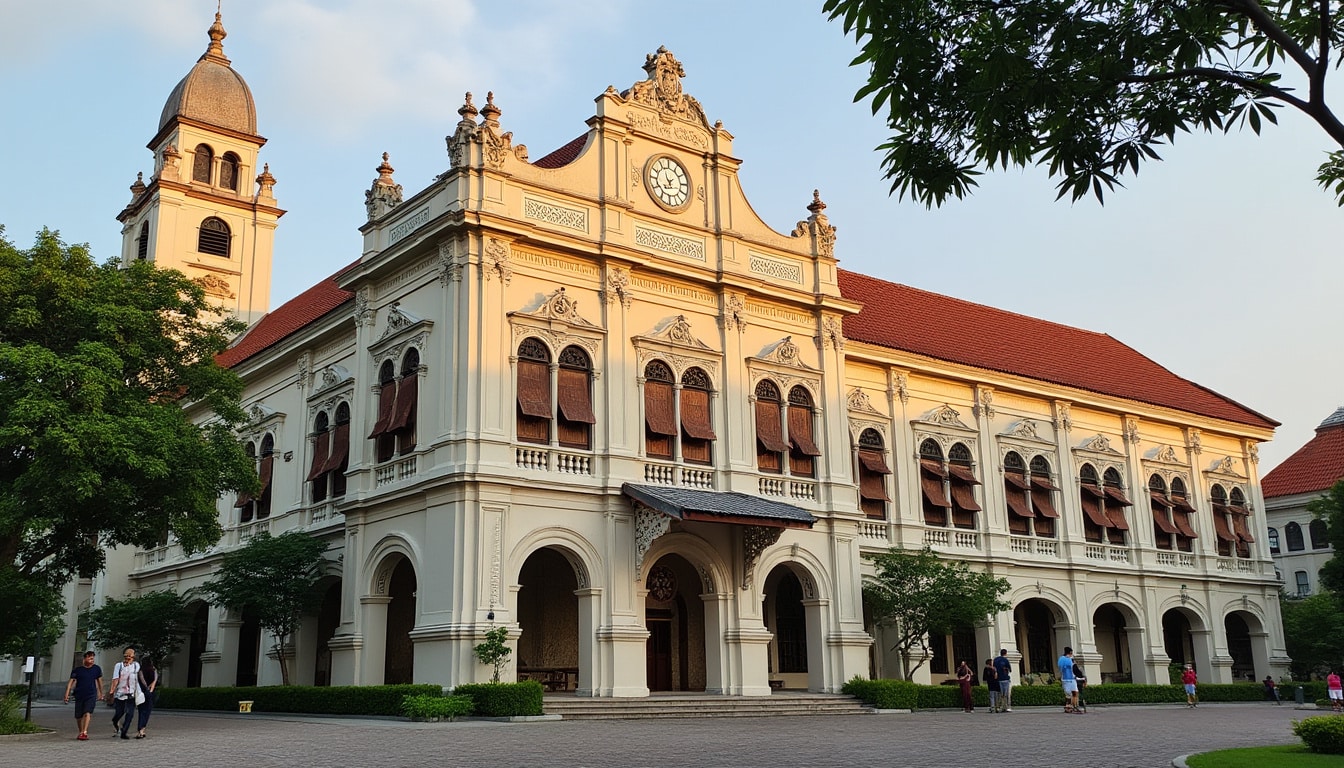
Colonial Influence and Economic Expansion
The colonial era marked a significant phase in Johor Bahru’s history, characterized by extensive economic development and infrastructural expansion under British influence. The construction of a railway connecting the city to Singapore in the early 20th century was a game-changer, catalyzing Johor Bahru’s transformation into an economic powerhouse.
The law, education, and healthcare systems were reformed under British administration, reflecting Western influences. The architecture from this period, particularly the Sultan Ibrahim Building—a blend of Malay and colonial styles—remains a prominent feature of the city’s landscape, symbolizing the harmony between local and Western influences.
Another pivotal factor in the city’s economic growth was the rise of rubber plantations and the discovery of tin and iron deposits, which attracted investments and labor from various regions. This influx bolstered the city’s economy, setting the stage for Johor Bahru to become a primary node in the global trade network.
- 🚂 Construction of the railway linked Johor Bahru to Singapore
- 🏗️ Development of the Sultan Ibrahim Building
- 🛤️ Expansion of infrastructure under British colonization
The end of World War II marked a transition period, as Johor Bahru shook off the constraints of colonial rule to forge a new identity. This era laid the groundwork for the modern city that continues to evolve dynamically as a prominent cultural and economic center.
Cultural Significance and Heritage Sites
Johor Bahru is a treasure trove of cultural sites, each telling a distinct part of the city’s story. The city’s ability to preserve its historical landmarks showcases its respect for heritage and culture, with numerous sites providing insights into its multifaceted history.
The Johor Bahru Old Chinese Temple, a harmonious blend of history and spirituality, is a testament to the city’s Chinese heritage. Built in the 19th century, this temple is one of Johor Bahru’s oldest religious structures and has miraculously withstood the ravages of time, including the bombings of World War II.
Furthermore, the Tiong Hua Chinese Heritage Museum offers a detailed glimpse into the lives of early Chinese immigrants, with artifacts and exhibits spanning several floors. It is a valuable resource for those keen on exploring the region’s rich Chinese ancestry.
- 🏯 Johor Bahru Old Chinese Temple: A symbol of unity among dialect groups
- 🖼️ Tiong Hua Chinese Heritage Museum: Chronicles of immigrant life
- 🙏 Sri Raja Mariamman Temple: A touchstone of Hindu culture
These sites, alongside the Johor Bahru Heritage Trail, offer visitors a chance to explore the city’s storied past physically. From the vintage charm of the Johor Bahru Old Railway Station, now transitioning into Malaysia’s first train museum, to the vibrant energy of Bazar Karat, each location is steeped in cultural and historical significance.
The Role of Royalty in Johor Bahru’s Development
The influence of the Johor Sultanate has been pivotal in shaping the cultural and political landscape of Johor Bahru. The royal family, with its rich history and deep-rooted traditions, continues to play a vital role in the state’s identity and governance.
Istana Bukit Serene, the royal palace, stands as a majestic symbol of the Sultanate’s enduring legacy. Not just a residence, it represents the historical authority and influence wielded by the Johor royal family throughout history. The palace’s sprawling gardens and distinctive architecture are open to the public during special occasions, offering a glimpse into the royal heritage.
| Royal Site | Significance | Open to Public |
|---|---|---|
| Istana Bukit Serene | Residence of the Sultan of Johor | Yes, during special events |
| Sultan Abu Bakar State Mosque | Cultural and architectural landmark | Yes, open year-round for visitors |
The Sultan Abu Bakar State Mosque, an architectural marvel resonating with Victorian and Moorish influences, is another prime example of Johor Bahru’s illustrious royal heritage. It not only serves as a religious center but also a cultural beacon, highlighting the architectural ingenuity from the era of Sultan Abu Bakar.
- 🏰 Istana Bukit Serene: The royal family’s official residence
- 🕌 Sultan Abu Bakar State Mosque: A mix of Victorian and Moorish design
- 🔗 Learn more about Johor Bahru’s architectural styles
The legacy of the Johor royal family is woven into the very fabric of the city, exemplified by grand architectural landmarks and the preservation of traditions that have withstood the test of time.
Modern Transformation and Economic Growth
In recent years, Johor Bahru has seen significant economic transformation, driven by urbanization and industrialization. The city, once reliant on agriculture and trade via Singapore, is now an economic hub attracting both local and international investments. The transformation into a modern city has been bolstered by government initiatives and private sector investments, particularly in the areas of technology, tourism, and real estate.
A crucial development is the Johor Bahru Waterfront, an integrated urban development that blends residential, commercial, and leisure spaces. This project highlights the city’s growth potential and aims to position Johor Bahru as a pivotal destination in Southeast Asia.
- 🌆 Johor Bahru Waterfront: A modern urban development
- 🏢 Rise of technology and real estate projects
- 💼 Johor Bahru as an economic hub linked with Singapore
Gelang Patah, a town within Johor Bahru’s district, plays a significant role in the industrial expansion. Known for its proximity to noteworthy economic zones, such as the Iskandar Malaysia region, it contributes heavily to Johor Bahru’s economic dynamism.
Through infrastructural advancements and strategic economic policies, Johor Bahru’s evolution reflects its readiness to embrace future challenges and opportunities while staying rooted in its rich cultural heritage.
FAQ About Johor Bahru’s History
- What is the origin of Johor Bahru’s name?
- How did the city transform during the colonial period?
- What are some key cultural sites to visit?
- How does the Johor royal family influence the city today?

Fun Facts & Curiosities About Johor Bahru
Johor Bahru, often abbreviated as JB, is a city that seamlessly blends the vibrancy of urban life with rich cultural heritage. Located right next to Singapore, it serves as both a bustling metropolis and a gateway to the rest of…

Architecture and urban features of Johor Bahru
Johor Bahru, the thriving capital of Johor state at the southern tip of Malaysia, presents a unique blend of past and present. This urban landscape, just a stone’s throw from Singapore, showcases a fascinating array of architectural styles and urban…

Nestled at the southern tip of the Malaysian Peninsula, Johor Bahru is more than just a gateway to Singapore. Known for its rich tapestry of cultures, delectable street food, and thriving community of digital nomads, this bustling city offers a…

Demographics and geography of Johor Bahru
Johor Bahru, a picturesque city located at the southern tip of Malaysia, presents an intriguing blend of modern urban development and rich cultural heritage. As the capital city of Johor state, Johor Bahru is not only a bustling economic hub…
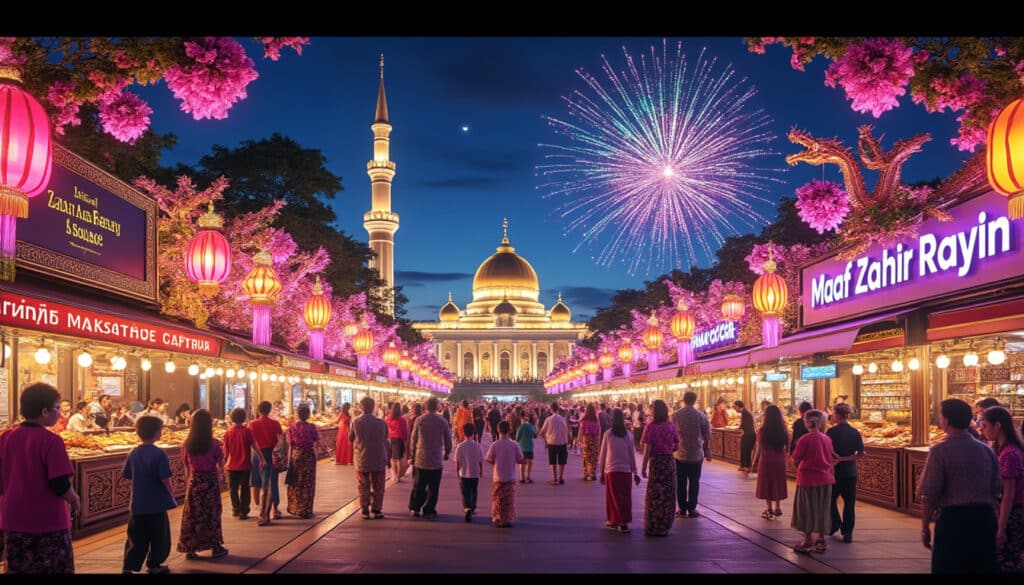
Holidays and celebrations in Johor Bahru
Nestled along the southern tip of Malaysia, Johor Bahru presents a vibrant tapestry of cultures, blending Malay, Chinese, Indian, and indigenous influences. This bustling city is not just a gateway to Singapore; it’s a haven for cultural festivities that intrigue…

Language and spelling of Johor Bahru
Johor Bahru, a bustling city located at the southern tip of Malaysia, is a vibrant melting pot of cultures and languages. As the gateway to Malaysia from Singapore, Johor Bahru offers a unique blend of linguistic diversity and historical significance.…

Local tips for tourists in Johor Bahru
Johor Bahru, the lively capital of Johor, Malaysia, is a bustling hub of culture, shopping, and culinary delights. Located just across the border from Singapore, this vibrant city offers an array of captivating attractions and hidden gems. Whether you’re here…

Names, flags, and identity of Johor Bahru
Johor Bahru stands at the crossroads of tradition and modernity, a city teeming with cultural symbolism and emblematic identity markers. Its captivating essence is captured in its names, flags, and the enduring legacy intertwining through its history. This exploration unravels…

Reputation and identity of Johor Bahru
Over the years, Johor Bahru has grown exponentially, going from a small fishing village to a bustling metropolis at Malaysia’s southern tip. This city, with its rich history and diverse cultural fabric, offers a unique appeal that draws in visitors…

Time and time zone in Johor Bahru
Johor Bahru, a bustling city in Malaysia, is not just renowned for its vibrant culture and delectable street food, but also for its distinct time zone characteristics. Situated in the southernmost part of the Malaysian peninsula, this city adheres to…
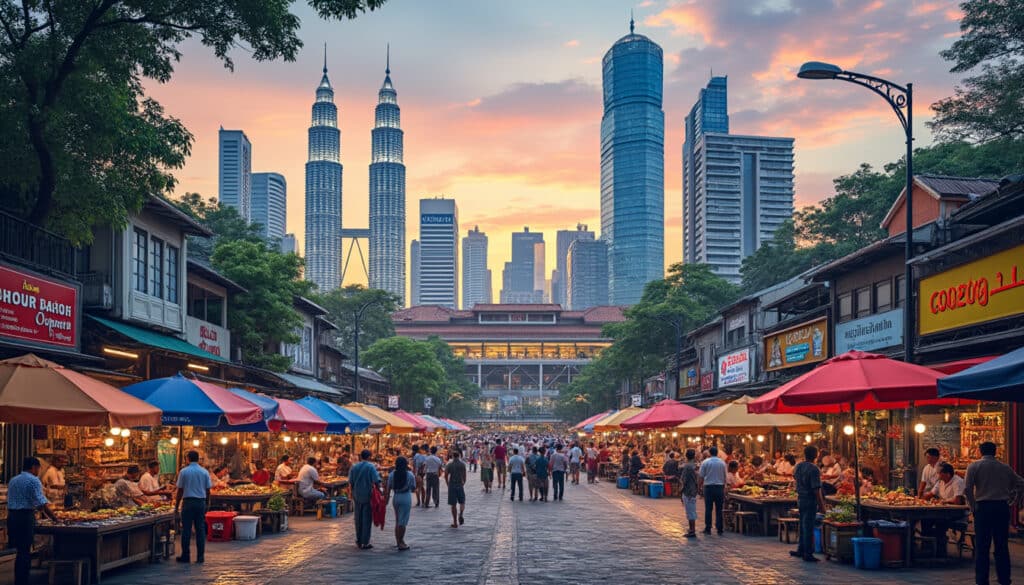
Unusual facts and social issues in Johor Bahru
Johor Bahru, often abbreviated as JB, may seem like just another bustling city in Malaysia, but beneath its modern facade lie layers of history, culture, and unique social dynamics. As the southernmost metropolis in Malaysia, it’s not only a key…

What does Johor Bahru look, smell, feel like?
As one of Malaysia’s most vibrant cities, Johor Bahru is a sensory delight. From its bustling streets and historical landmarks to its diverse culinary offerings, the city captivates the senses in ways that are both modern and rooted in tradition.…

